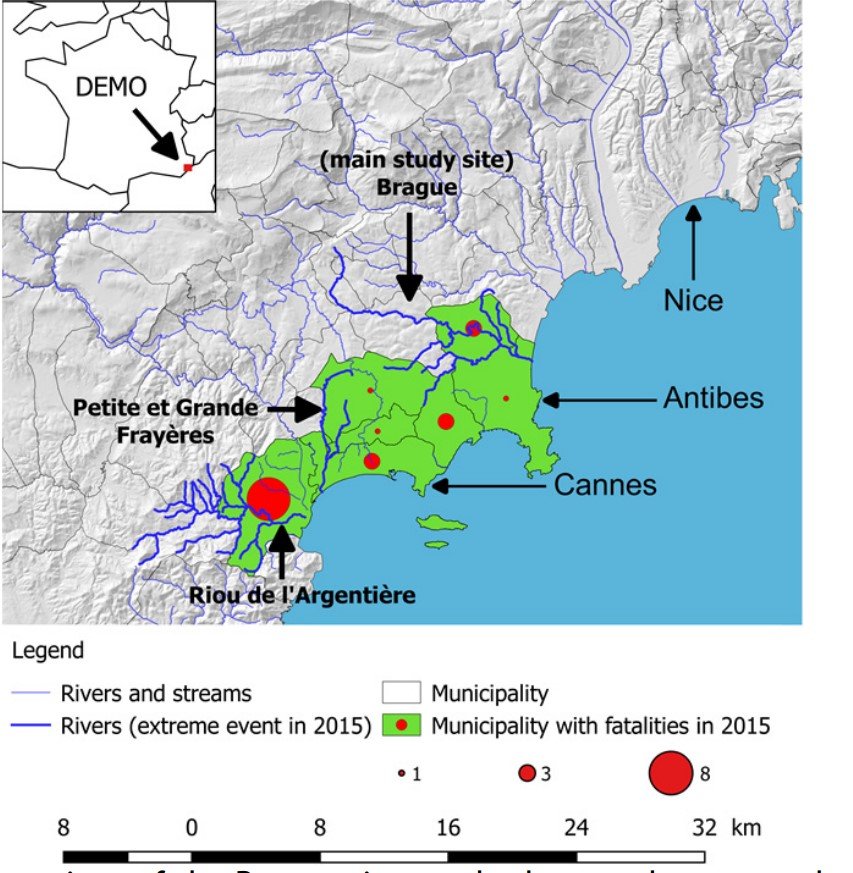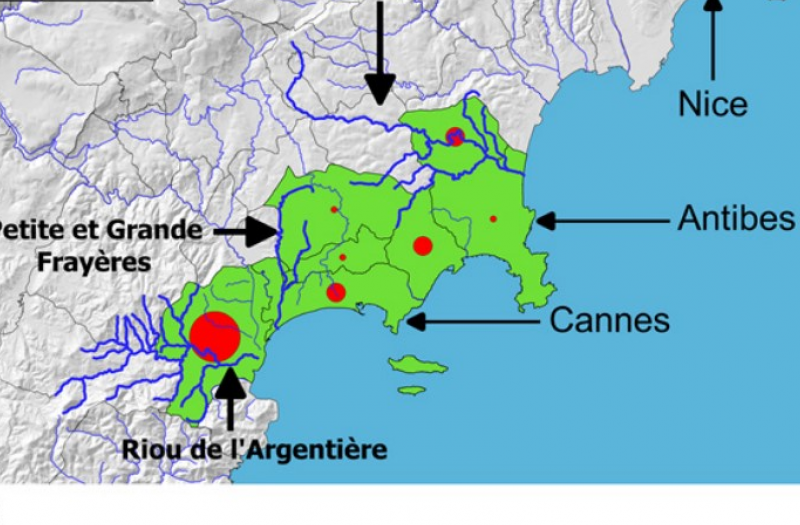Brague DEMO: Flash flood and wildfire hazards in a Mediterranean catchment

The Brague catchment region is located along the Mediterranean coast. A quite dense urban belt is located aside the shore, where all hilly catchments finish their way to the sea.
On 3rd, Oct. 2015, severe rainfalls triggered dramatic floods. Twenty peoples died, 550-650M€ of losses were observed, as well as cascading complications on transportation, communication and energy networks. This event will be used as a calibration case to study torrential flood hazards and risks and the effects of ecosystems on it.
NAIAD will concentrate the investigation effort on the Brague (61 km², 4 dead peoples in 2015, rural headwaters, forested central part and urban lowlands, numerous data on the event features, key impact of large wood jams).
The public perception of ecosystems (e.g. forests, including possibly protecting ones) is strongly worsened following floods with massive wood jams. This case study aims at performing a comprehensive and in-depth analysis of a Mediterranean catchment to assess NbS benefits, dis-benefits and co-benefits and ways to optimize them.
The NAIAD project will help to better understand what occurred in details and in which extend Nature-Based Solutions may help to improve the situation. Among others, the three NAIAD partners mainly involved in the DEMO study will in particular:
- Study risk and ecosystem perception ...
A better knowledge of ecosystem mere, dis- and co- benefits should enable more comprehensive and integrated forest management in the both the riparian and hillslope areas. This will enhance:
- Increase stakeholder awareness & knowledge about NbS.
- Increase willingness to invest in NbS.
- Increase awareness of NbS solution & their effectiveness and co benefits.
The better understanding of the catchment will also enable to tailor the protection system maximizing both green and grey solution effectiveness and efficiency for the aims of :
- Increase quality and quantity of green and blue infrastructures.
- Improve connectivity and functionality of green and blue infrastructures.
- Increase Biodiversity.
- Flood peak reduction.
- Reduce flood risk.
The Brague catchment analysis can likely be transferred at various scales depending on the topics:
|
Topic |
Scale |
|
Effects of large wood on flood hazard aggravation |
Global |
|
Links between wildfire, urban sprawling and hydrology Mediterranean |
|
|
Damage curves for flash flood damage valuation |
Mediterranean |
|
NbS co-benefit analysis |
French coast |
The case study is particularly rich in data on flash floods and related issues. The in-depth analysis will enhance our understanding of large wood-related flood aggravation. More lessons will emerge within the live time of the case study.
This case study has received funding from the European Union’s Horizon 2020 research and innovation programme under grant agreement No 730497 for the project “NAture Insurance value: Assessment and Demonstration” (NAIAD) within call SC5-09-2016 Operationalising insurance value of ecosystems.
Jean-Marc TACNET (ThinkNature id : jean-marc.tacnet)



